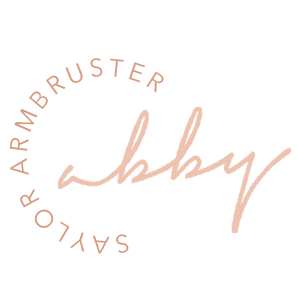How to Develop Your Self-Brand
Whether you’re pursing a career online or in the real world, it’s important to present yourself both accurately and professionally; therefore, it is crucial to determine who you are, what you’re interested in, what you’re good at, what you do, and how you want others to perceive you when developing your own self-brand. Branding yourself is a crucial element of not only personal growth, but also professional growth — especially when seeking new career opportunities. Here are some ideas to incorporate into your branding process.
Choose 3 words or a key phrase that best describes you.
This can be difficult, but this is a key first step of the brand development process. What do you represent? What personality traits or skills of yours stand out the most? This can be incorporated into your resume or website, as well as your LinkedIn profile or job applications.
Make the structure and appearance of each of your social media accounts consistent, appealing, and noteworthy.
If your accounts are public, it’s important to have a clean, consistent online presence to present to potential employers. Decide what kind of topics you want to talk about, the type of content you want to share, and the style of pictures you want to post. I’m a fan of making your brief bio of your accounts consistent throughout each platform so people can quickly identify you when searching for (or stumbling upon) your profile. For professional accounts, it’s important to have a good quality profile picture that represents your style and aesthetic.
Create an elevator speech to use as a self-pitch.
When I first learned about elevator speeches and was asked to write one for a class, I thought it was pointless and something I would never need — and I later learned I was very wrong. When you first meet someone, especially in the workforce, they always ask for you to tell them about yourself (where you’re from, where you go/went to school, what you’re studying, what your career goals are, etc.) and it’s so helpful to have a little something prepared — even if it’s just a few talking points, it makes this type of conversation go much more smoothly. It’s actually more difficult to talk about yourself than you think, so take the time to reflect on these key topics.
The design of your resume and business cards should represent you just as much as the content does.
In my opinion, plain formatted, overly structured, black and white resumes are a no-go. It’s incredibly important that an employer remembers you after seeing your resume in order to have lasting-power in the job market. If you are fun and creative, your resume and business cards should reflect that. Your resume, as well as your business cards or any other product you hand out or display, should express who you are and what you can bring to the table without anyone needing to meet you. Let these items speak for you.
I hope you’ve found these tips helpful and this has inspired you to revamp your brand and get excited about who you are and what you represent. How are you going to apply these tips to your brand development process? What 3 words best describe you?



Such a spot on representation of the importance of self branding .. I taught a class last year for Women’s Leadership Development stressing the necessity of self branding … bravo Abby!!
Thank you! Self branding is an important element of self growth and personal/professional development.
This is great information! Thanks for sharing your tips.
xo, Liz
http://lipstickandconfetti.com
I’m glad you liked it! Thanks for commenting, Liz 🙂